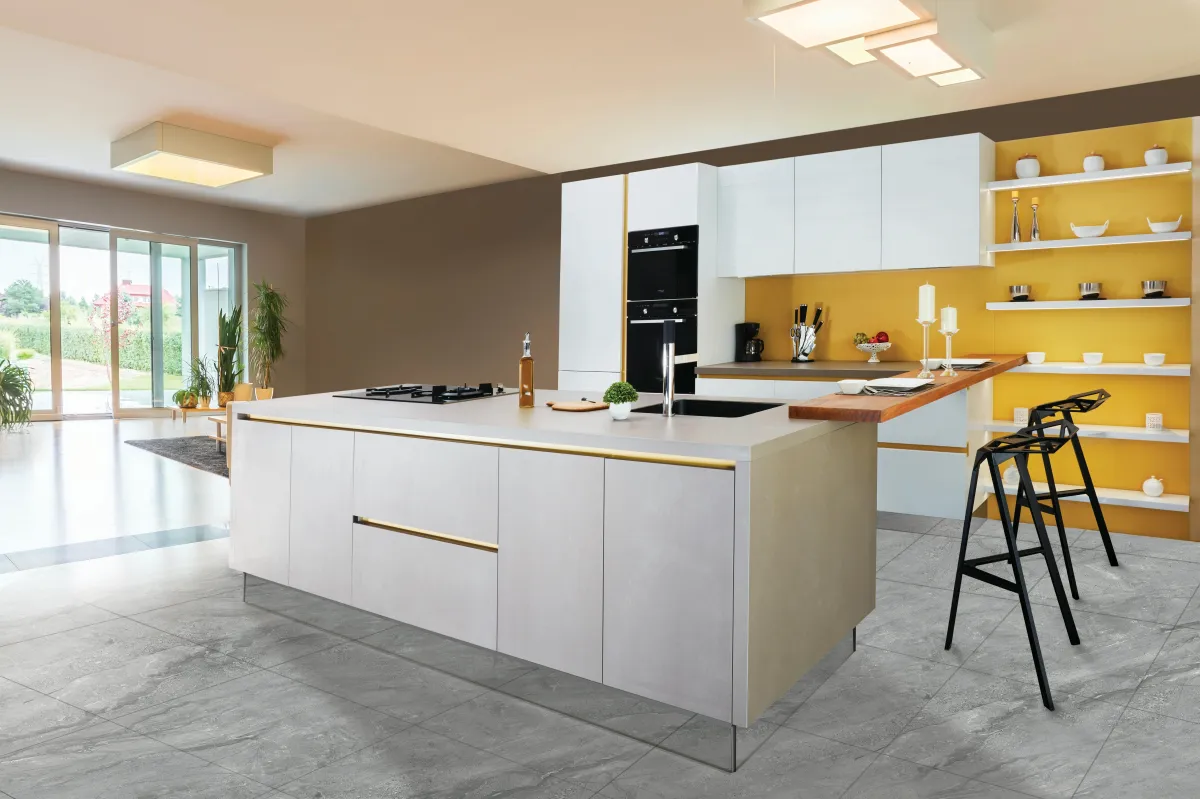OUR RECENT POSTS

Classic vs. Contemporary Kitchen Design Trends
The kitchen is often referred to as the heart of the home, a space where functionality meets style. Over the years, kitchen design has evolved significantly, with two distinct styles standing out: classic and contemporary. Both styles offer unique aesthetics and practical advantages, catering to different preferences and lifestyles. In this blog, we’ll explore the key elements of classic and contemporary kitchen designs, their pros and cons, and how to choose the right style for your home.
Classic Kitchen Design
Classic kitchen designs are timeless, exuding charm, elegance, and a sense of history. They are inspired by traditional elements and are often characterized by intricate details and rich textures.
Key Features of Classic Kitchens:
Natural Materials: Wood cabinetry, natural stone countertops, and tiles are common. Marble and granite are often used for their luxurious and durable appeal.
Neutral Color Palettes: Shades like white, cream, beige, and gray dominate, creating a warm and inviting atmosphere.
Detailed Cabinetry: Cabinets often feature raised panel doors, ornate molding, and decorative hardware in finishes like brass or antique bronze.
Farmhouse or Apron Sinks: These sinks add a vintage touch and pair beautifully with traditional faucets.
Statement Lighting: Chandeliers or pendant lights with intricate designs are common, providing both functionality and ambiance.
Pros of Classic Kitchens:
Timeless Appeal: They never go out of style and can increase the resale value of your home.
Warm and Inviting: The neutral tones and detailed finishes create a cozy and comfortable environment.
Durability: The use of high-quality natural materials ensures long-lasting functionality and beauty.
Cons of Classic Kitchens:
Higher Cost: The premium materials and intricate details can be expensive.
Maintenance: Natural stone countertops and wood cabinetry require regular upkeep to maintain their appearance.
Contemporary Kitchen Design
In contrast, contemporary kitchens embrace modernity, minimalism, and innovation. They are designed to cater to today’s fast-paced lifestyles, prioritizing functionality and sleek aesthetics.
Key Features of Contemporary Kitchens:
Streamlined Designs: Flat-panel cabinetry, clean lines, and a lack of ornamentation define contemporary kitchens.
Bold and Contrasting Colors: While white and black dominate, bold accent colors like navy blue, emerald green, or mustard yellow are often used to create a striking contrast.
Innovative Materials: Quartz countertops, stainless steel appliances, and glass backsplashes are popular choices.
Smart Technology: Smart appliances, touchless faucets, and integrated lighting systems are common.
Open Layouts: Contemporary kitchens often blend seamlessly with dining or living areas, promoting a spacious and cohesive feel.
Pros of Contemporary Kitchens:
Modern Appeal: Their sleek and sophisticated design is ideal for modern homes.
Low Maintenance: Materials like quartz and stainless steel are easy to clean and maintain.
Versatility: The minimalist design allows for easy updates with changing trends.
Cons of Contemporary Kitchens:
Risk of Becoming Outdated: What’s trendy today might feel dated in a few years.
Potential Lack of Warmth: The emphasis on sleekness can sometimes make the space feel less inviting.
Choosing Between Classic and Contemporary
When deciding between classic and contemporary kitchen designs, consider the following factors:
Your Personal Style: Do you prefer timeless elegance or modern simplicity? Your aesthetic preferences should guide your choice.
Home Architecture: A classic kitchen may complement a traditional-style home, while a contemporary kitchen works well in modern or urban homes.
Lifestyle Needs: If you prioritize cutting-edge technology and ease of maintenance, a contemporary kitchen might be the way to go. On the other hand, if you value warmth and timeless appeal, a classic kitchen may be better suited.
Budget: Classic kitchens often require a higher upfront investment due to premium materials, while contemporary kitchens may offer more budget-friendly options.
Blending the Two Styles
If you can’t decide between the two, consider a transitional kitchen design, which blends elements of both classic and contemporary styles. For instance:
Pair sleek, flat-panel cabinets with a marble countertop.
Incorporate traditional hardware into a modern kitchen layout.
Use a classic neutral palette but add bold, contemporary lighting fixtures.
This approach allows you to enjoy the best of both worlds while creating a unique and personalized kitchen.
Whether you choose a classic or contemporary kitchen, the most important aspect is that it meets your needs and reflects your personal style. Both designs offer distinct advantages, and with thoughtful planning, your kitchen can become a functional and beautiful space that you’ll love for years to come.
One or more of the links above are affiliate links, meaning, at no additional cost to you, we will earn a slight commission if you click through and make a purchase. Each of these products is chosen by a trusted member of our team.
